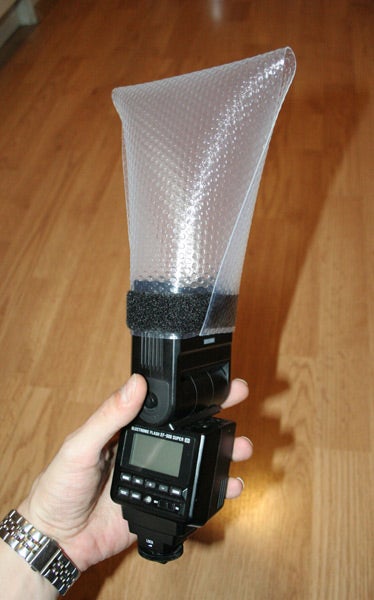Speed lights, or flashes as we used to call them, are great for getting lighting where it's needed.
But, in their basic, unmodified state, they produce a light that's pretty hard and not flattering.
So far, I've shown how you can make bounce cards and soft boxes that will take the edge off that harsh light and make your subject look better.
Another device for doing this is the Lightsphere developed by Gary Fong. It's essentially a translucent plastic-and-silicone sphere that attaches to your flash and provides a diffused light for your subject.
I remember seeing one in a picture of a press scrum at a Mitt Romney campaign event and joking that it looks like Mystery Science Theatre 3000's Tom Servo is a Romney supporter.
The concept is actually quite good, especially when you're in places where there isn't a white ceiling and/or wall to bounce a flash.
But it comes with a $70 price tag, which can be a "hard nope" for some people.
However, there's a way to get the same effect at a fraction of the price, and all it requires is a trip to the local department store for a few odds and ends. Specifically, you'll need a plastic drawer/shelf liner (not the self-adhesive kind) and velcro tape.
As shown on Instructables, you cut a 15-by-6-inch piece out of the shelf liner, apply the velcro on the narrow ends of the piece on opposite sides and then you wrap it around your flash.

It should look like this when you're done. (Photo credit: Arthur Gajewski, cc-by-sa)
You'll notice it appears to be sideways on the flash, but that allows you to effectively use it whether you're holding the camera in a landscape or portrait orientation.
So, how does it work?
Allen Mowery did a Youtube video demonstrating. Check it out. I think I'll be adding one to my ever cramped camera bag.






